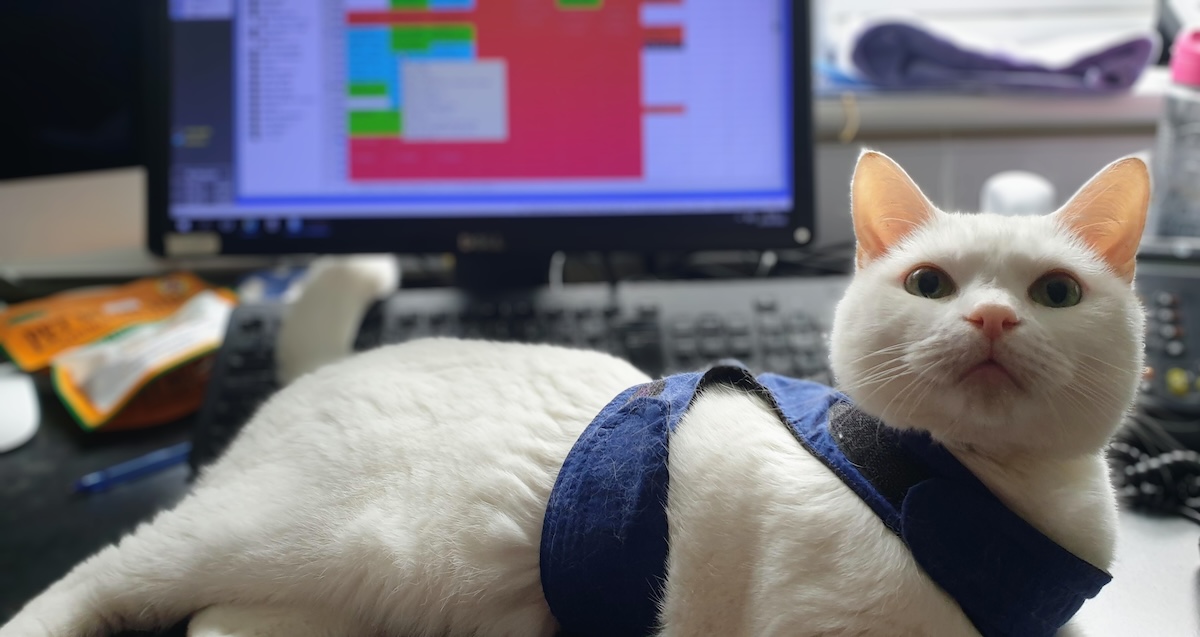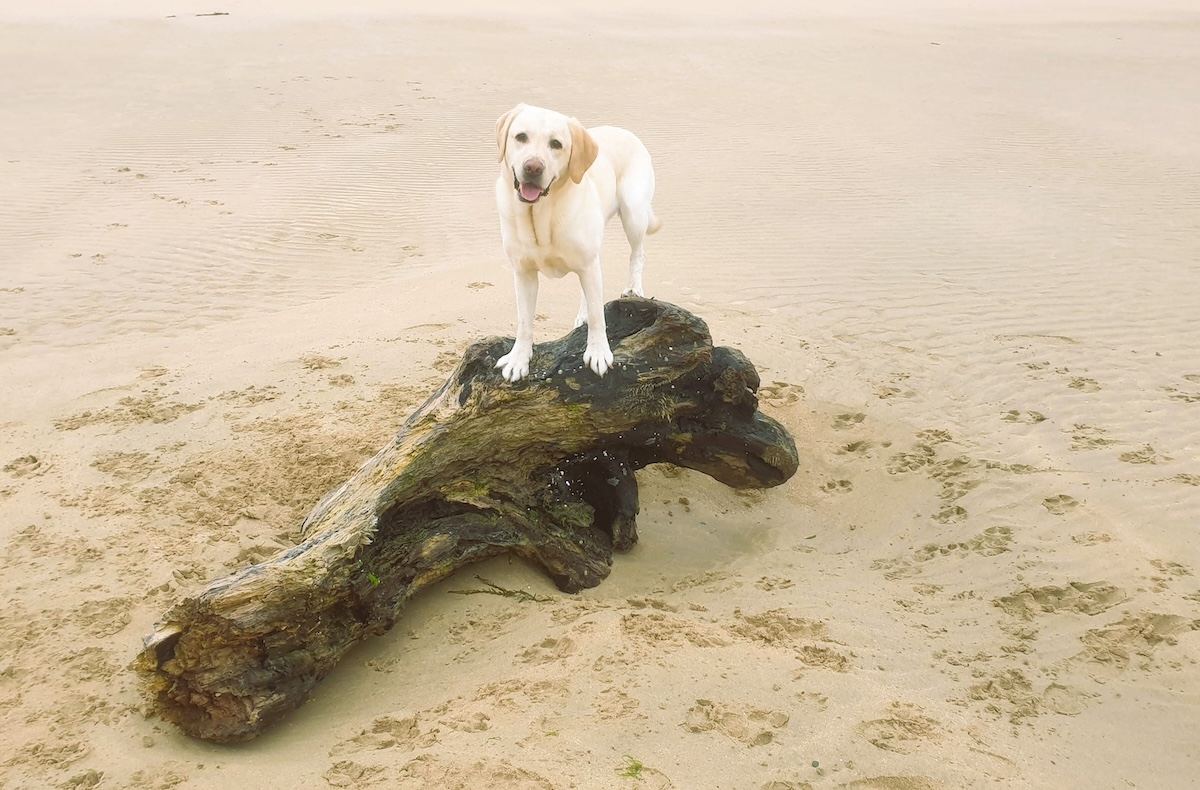
The information is current and up-to-date in accordance with the latest veterinarian research.
Learn more »
Hi, I’m Dr. Karyn! Read my introduction to learn more about me and meet my five hilarious cats: Clutch, Cyril, Alex, Zelda, and Zazzles.
You might already know that my buddy, Clutch, enriches my life with his quirky personality and unique habits. There are also some ways in which he contributes to my already significant amount of gray hair, and not too long ago, one of those was having a spate of neurological episodes.
One morning, as I was chasing the final dregs of cornflakes around my cereal bowl, I noticed movement out of the corner of my eye. Clutch was lurking under a chair with a perplexed look on his face, slowly reaching one leg in front of the other, seeming confused about where he was and what his limbs were doing. His head was wobbling ever-so-slightly, and he didn’t seem to be able to stand up. This odd behavior didn’t last very long, but long enough for me to grab my phone and take a short video clip. Not because I thought it would make an entertaining TikTok post, but because I knew how useful this sort of footage can be when trying to diagnose a problem.
Despite my initial instinct to PANIC!! I kept a close eye on Clutch over the next few days, looking for any other signs or aberrations, and apart from his wobbly episode, everything seemed to be completely normal. Just over a week later, he was at it again, earning himself a trip to work with me.
Running ALL The Tests
I was fortunate enough to be working at a veterinary hospital with a CT scanner on site, and given that Clutch was fully insured, I wanted to test for everything. We drew blood, performed a CT scan, and obtained a sample of his cerebrospinal fluid (CSF) from a spot just below the base of his skull. Apart from a slight change in one of his electrolytes, everything came back normal, which in many ways was a relief, but was also very frustrating.
Clutch’s normal CT scan
I even consulted a veterinary neurologist, only to be informed that Clutch’s clinical signs were “quite unusual.”
I’m sure you’ve had a similar experience, whether with your own pet, yourself, or a family member, where there was something wrong, but all the medical tests came back normal. It’s good news, but it doesn’t explain what the problem is! As a vet, I often have to deal with the frustration of running a barrage of tests, only to be able to provide worried owners with an extensive list of all the things it isn’t. This can be an important process of course, but it doesn’t alleviate the feelings of irritation and helplessness.
One possible explanation for Clutch’s neurological episodes was epilepsy, a diagnosis only supported by his otherwise normal test results. But these episodes weren’t consistent with the generalized seizures we would expect to see with epilepsy.
And Then There Were None
Apart from a marginally increased sodium level, Clutch’s test results were normal, and now, there were no more episodes either. This is great news, or at least it should be, right? He was healthy, no more neurological signs, and his blood tests, CSF analysis and CT results were normal – this should be good news. But an unsolved mystery does not sit well with me, and I was determined to get to the bottom of it.
A Decorative Design Flaw
It was now several months after Clutch’s health scare, and there had thankfully been no more incidents. We were preparing for the arrival of visiting family, and I was getting the spare room ready for guests. I put on fresh sheets, checked everything was clean and tidy, and that’s when it hit me: The salt lamp.
The suspect: my Himalayan salt lamp
Not literally of course, otherwise I might have been the one with a neurological problem, but the realization that this supposedly purifying lump of salt might have been our culprit lit up brighter than the lamp itself. Why had it not occurred to me before?
Mindful that not everyone is as tolerant of cat hair on their… everything, we always keep the spare room door closed, but there were a few weeks, earlier that year, when we had allowed the cats to access the room while we were doing some repairs. And you guessed it, those weeks were right around the time that Clutch started behaving strangely.
Why Blame the Salt Lamp?
For anyone that doesn’t know, consuming an excessive amount of salt causes a shift in our electrolyte balance, which affects how water moves in and out of our cells. Too much salt essentially dehydrates our cells, causing them to shrivel up like a wrinkled raisin. This makes us extremely thirsty, and if we drink too quickly, our little raisin brain cells become big juicy grapes too quickly, and this can cause temporary, even permanent, brain damage.
You might not think that a salt lamp would be all that appealing to a cat, but ask anyone who tries to put a bag of potato chips down once they’ve started munching, salt is pretty moreish!
So despite the fact that Clutch no longer had access to the lamp, I wasn’t taking any chances – it had to go! Don’t worry – it found a loving home in a new, pet-free home.
Back to his weird normal self!
Yet Another Lesson Learned At Home
There are two positive outcomes to Clutch’s brief and frightening experience:
Realizing that Clutch is fine!
Highlighting the potential danger posed by salt lamps in the home, something that served me well when presented with a similar case in a dog, one year later.
It wasn’t something the dog’s owners had thought to mention, but because of Clutch, it is something I always remember to ask, proving once again that my cats provide me, not only with laughter, cuddles, and a lifetime supply of cat hair on everything, but with information and perspectives I might have otherwise overlooked.
Thanks, Clutch!






